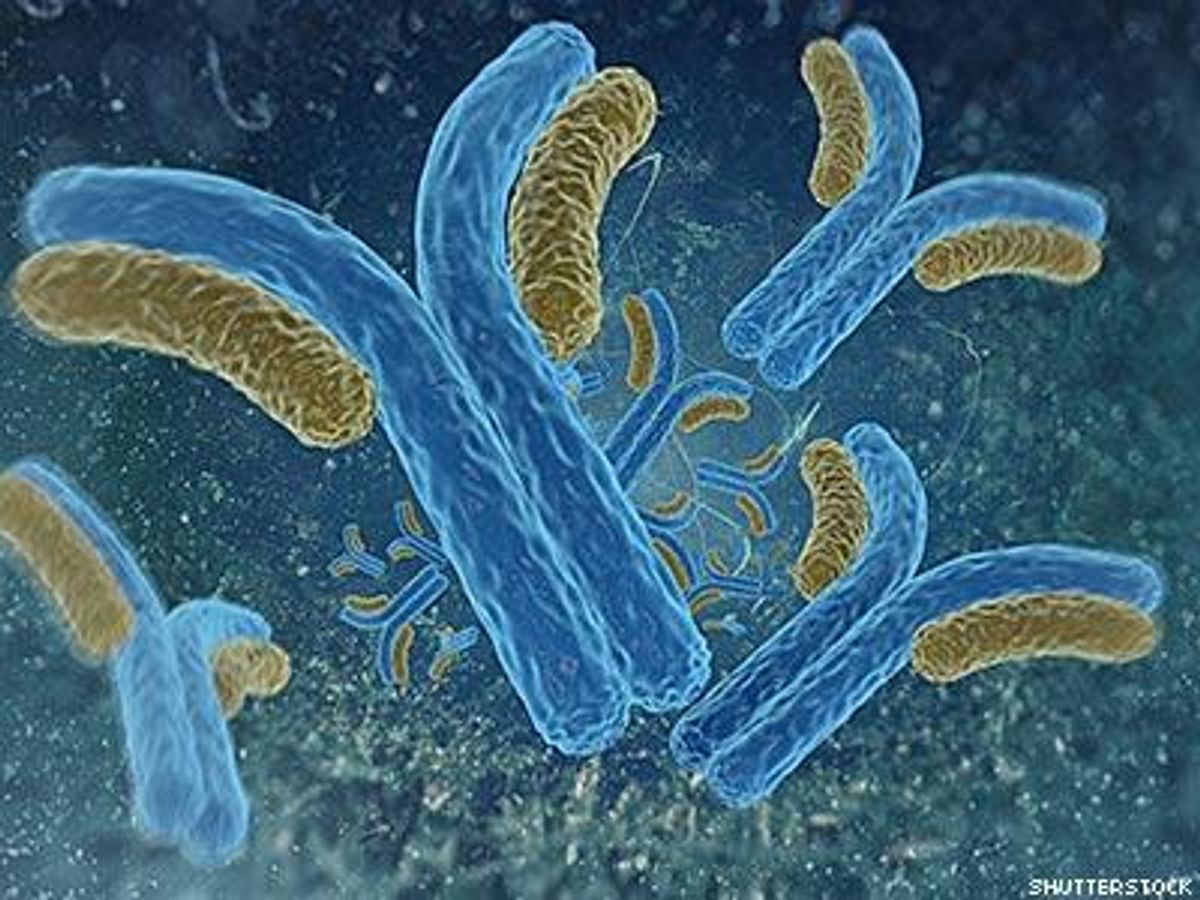The only functional treatment for HIV, antiretrovirals keep the amount of HIV in the body at a low level. They treat — but don't cure — HIV by preventing its growth. The reason antiretrovirals don't completely clear HIV from the body is because the virus injects its genetic material into white blood cells, allowing it to go unnoticed by the immune system and survive in the body in what scientists call HIV "reservoirs." In many ways, your white blood cells are your immune system. So when a virus like HIV embeds its genetic material into the very cells meant to protect you from infection, it becomes incredibly difficult to kill.
Thankfully, antibodies are also part of the immune system. Antibodies are large, Y-shaped proteins used by the immune system to detect and neutralize foreign objects — like bacteria and viruses. Two new studies have recently come out that propose a way to locate HIV in white blood cells through a creative new approach: by creating artificial antibodies specifically designed to target the HIV.
“The rationale is sound, and the data are exciting, but we will need to move carefully,” Steven Deeks, an HIV clinician at the University of California, San Francisco, told Science. “There really is zero room for error.”
Two new papers — one in Nature Communications that was conducted by a team from the Vaccine Research Center at the U.S. National Institute of Allergy and Infectious Diseases in Bethesda, Maryland, and one in The Journal of Clinical Investigation that was a collaboration between three universities and a biotech company — detailed test-tube experiments in which both groups created articial antibodies to target HIV-infected white blood cells.
Remember the distinct “y” shape of natural antibodies? In natural antibodies, both “arms” of the Y clasp the same target. But the arms of these artificial antibodies — called "bispecific" antibodies — each grab separate proteins.
One arm grabs an HIV protein from a white blood cell, while the other grabs a killer T cell with a CD3 receptor. Killer T cells are the good guys; they're CD3-studded lymphocytes that destroy HIV-infected cells. Grabbing HIV and then snagging a killer T cell (named so because it literally kills infected cells) is essentially leading the prey into the villain's lair.
“The molecule works just as you’d hope it would in several assays,” says John Mascola, director of NIAID’s Vaccine Research Center in Maryland, in Nature Communications.
But Deeks, of the University of California, San Francisco, told Science that caution is important. He says these artificial antibodies can cause too much activation of T cells, which can lead to an inflammatory reaction that damages organs and, at worst, leads to death.
According to Science, one 1999 study of artificial antibodies used to purge HIV reservoirs in three HIV-positive people saw serious side effects, including kidney failure and seizures. But researhers say these new antibodies would have different results because the new bispecific antibodies cause less T-cell activation.
Neither team has yet shown that their artificial, bispecific antibodies can actually reduce resevoirs of HIV in monkeys, and it will take at least a year before they are able to test the concept in people living with HIV. David Margolis, a virologist at the University of North Carolina, Chapel Hill, and co-author of the JCI study, says draining an HIV reservoir will likely require combining artificial antibodies with other anti-HIV treatments.








































































